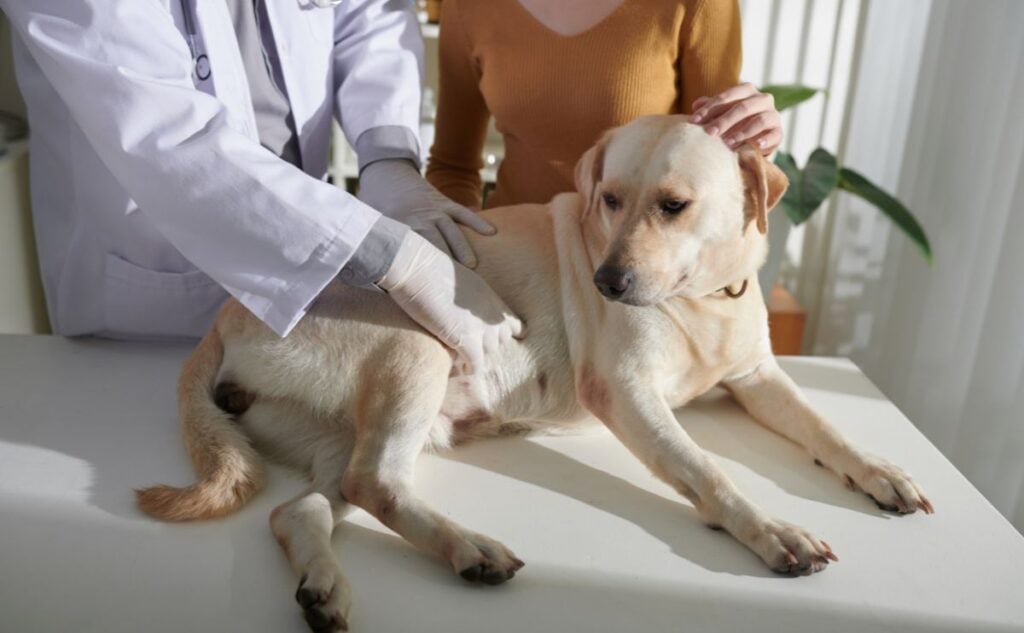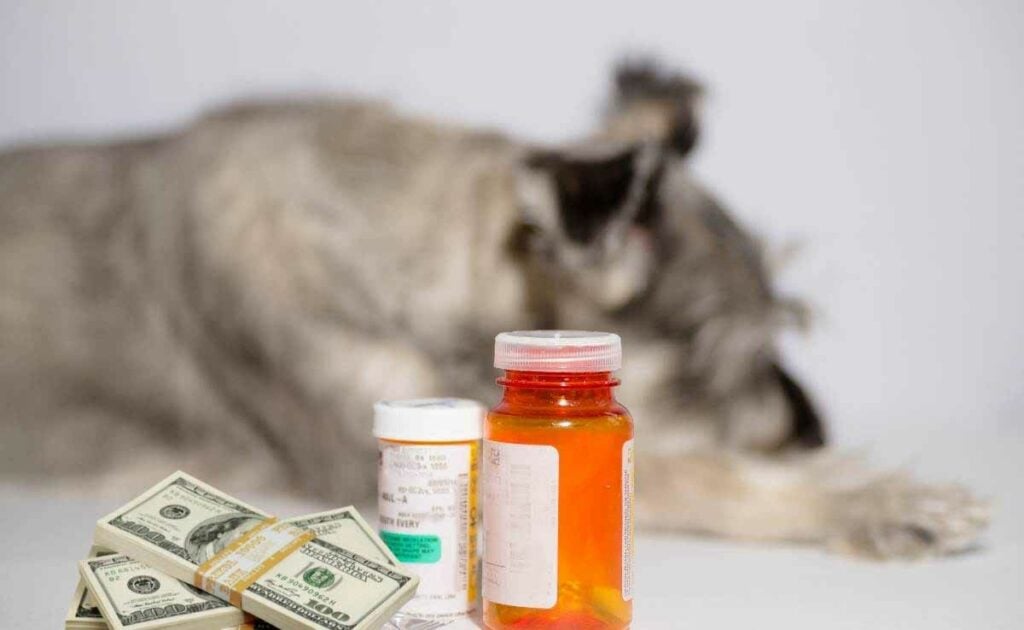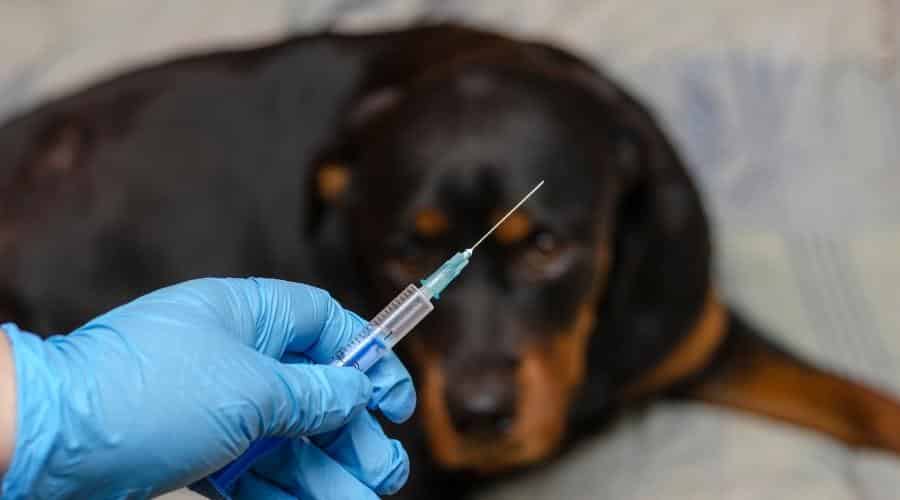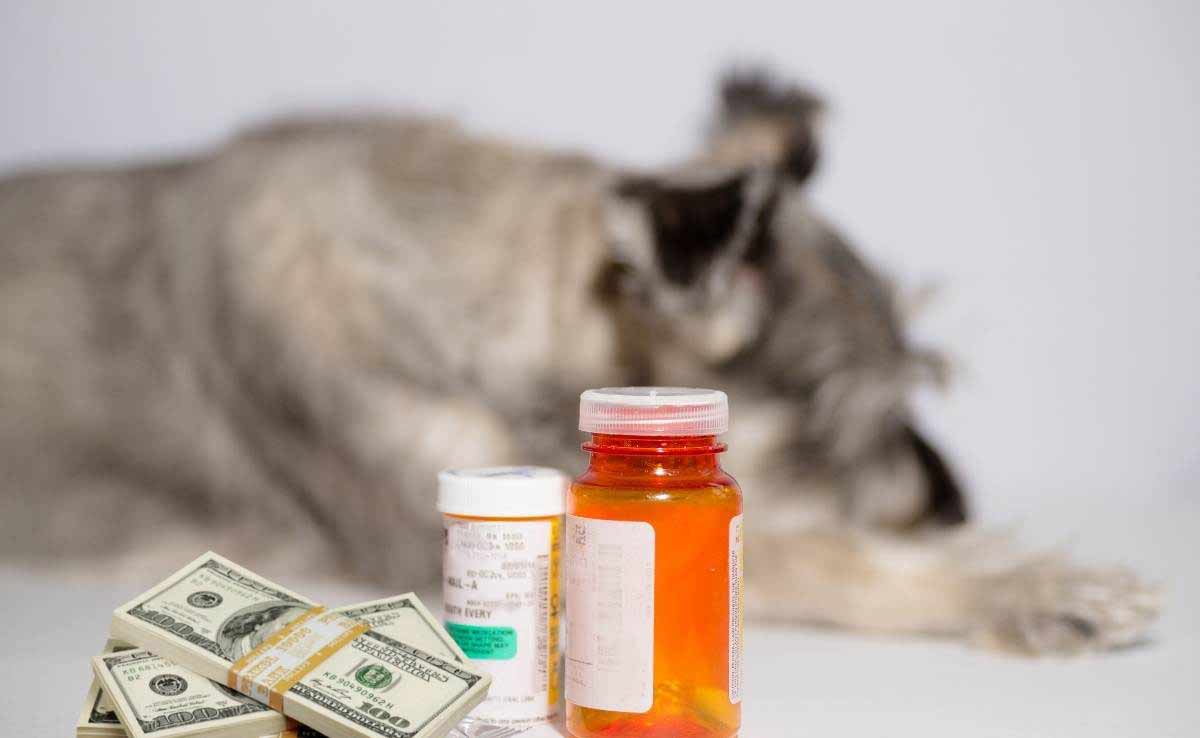When Love Isn’t Enough: The Rise Of Economic Euthanasia From Our Study On Pet Owners’ Decisions On Vet Care
When you purchase through links on our site, we may earn a commission. Here’s how it works.

For many pet parents, the rising cost of veterinary care turns love into heartbreak. Imagine being forced to choose between saving your beloved dog’s life and protecting your family’s financial future. It’s a gut-wrenching dilemma thousands face every year, leading to the devastating reality of economic euthanasia. But how much are dog owners really spending on their pets’ health? And how can you avoid financial strain while still providing the care your furry friend deserves? Read on to uncover the answers and actionable tips to protect both your wallet and your pet’s well-being.
Table of Contents
6 Key Survey Findings
- 48% of respondents would consider euthanizing their pets if they were diagnosed with a condition requiring costly treatment that was difficult for them to pay.
- 36% said the most they’d be willing to spend on their dog’s medical needs to avoid euthanasia is $1,000. Meanwhile, 17% said there is no limit to how much money they’d spend to save their dog’s life.
- 55% of pet owners would consider unnecessary euthanasia instead of paying $2,500 for vet care.
- 18% of respondents are unlikely to spend money on costly medical treatment for a dog (less than 5 years old).
- 41% of respondents have gone into debt to pay for their dog’s non-routine vet care.
- 55% of respondents wish they had pet insurance in the past to help cover unexpected vet costs.
Are Sky-High Vet Bills Pushing Pet Owners Toward Unnecessary Euthanasia?

Pet parents often cite the rising cost of veterinary care as one of their biggest challenges, and the numbers back it up. According to our survey, 48% of respondents admitted they would consider euthanizing their pet if faced with a condition requiring costly treatment that they couldn’t afford. This heartbreaking reality, known as economic euthanasia, highlights the painful decisions many pet owners must make when their finances and their pets’ health collide. The emotional toll of such choices is immense, leaving pet parents feeling guilt-ridden and helpless in the face of financial constraints.
This issue doesn’t just impact pet owners; it also places significant emotional strain on veterinarians and their staff. Veterinary professionals often bear witness to these heartbreaking scenarios, grappling with the ethical and emotional challenges of providing care in the face of financial limitations. For them, it’s not just about treating animals—it’s about navigating the intersection of compassion, medical care, and financial reality. Economic euthanasia is a pervasive problem that affects everyone involved, underscoring the urgent need for solutions that balance affordability with quality care.
What Is Economic Euthanasia?

The Humane Society Veterinary Medical Association defines economic euthanasia as
1. a condition in which euthanasia is elected based primarily, principally, or to a large degree on the cost of veterinary medical care;
2. a condition in which veterinary care is bypassed based on the anticipated cost of care, and the progression of illness leads to euthanasia; or
3. a condition in which veterinary care is sought and minimal or no testing/treatment is elected based on the costs of care, resulting in eventual euthanasia.

Other Factors That Lead To A Decision To Euthanize Pets

According to our survey, the financial burden of medical treatment plays a significant role in decisions surrounding euthanasia. Specifically, 18% of respondents revealed that the cost of necessary medical care was a primary factor in their decision to euthanize their dog. This stark statistic highlights the difficult reality many pet parents face when balancing their financial capacity with their desire to provide the best possible care for their beloved companions. While heartbreaking, these financial constraints often force pet owners to make decisions they never imagined having to face.
Interestingly, while finances are a significant factor, the survey showed that the primary concern for most pet owners is their pet’s pain and suffering. Nearly two in five respondents (38%) cited their pet’s pain as the leading reason for choosing euthanasia. This reinforces the deep emotional bond between pets and their owners and the lengths to which pet parents will go to ensure their companions do not endure prolonged suffering. It’s a testament to the compassion and love that define these relationships, even in the most difficult moments.
Other considerations also weighed heavily on pet owners’ minds. Thirty-six percent of respondents reported feeling there was nothing more they could do to prolong their dog’s life, while 35% pointed to their pet’s overall health status as a key factor in their decision. These findings suggest that the choice to euthanize is often multifaceted, combining medical, emotional, and financial considerations. For many pet parents, it’s not just about one factor but a culmination of concerns that make the decision both unavoidable and incredibly painful.

What Price Would You Pay To Save Your Pet’s Life?

Our data revealed that when faced with the possibility of euthanasia, 36% of pet owners would be willing to spend up to $1,000 on their dog’s medical needs to avoid such a heartbreaking decision. This figure demonstrates the financial threshold many pet parents grapple with as they weigh their emotional attachment to their pets against their economic realities. For these individuals, the $1,000 mark represents a significant investment, reflecting the depth of their commitment to their dogs’ well-being.
Interestingly, the same percentage—36%—reported that they have already spent more than $1,000 on non-routine veterinary care for their dogs. These expenses could include surgeries, emergency treatments, or long-term care for chronic conditions. The overlap between these groups suggests that while some pet parents set a limit on how much they’re able to spend, others have already exceeded that boundary out of necessity or love for their pets. This reality highlights the financial strain that unexpected veterinary costs can place on households.
Notably, 17% of respondents shared that there is no limit to how much money they would spend to save their dog’s life. For these devoted pet owners, their bond with their dog transcends financial considerations, reflecting a willingness to go to any lengths to ensure their pet’s survival. While this perspective speaks to the extraordinary love many people feel for their pets, it also raises important questions about the accessibility of affordable veterinary care and the broader issue of economic euthanasia.

What’s alarming about these findings is that 55% of respondents said they wouldn’t be willing to spend more than $2,500 to avoid euthanasia. Given that the cost to treat many illnesses and emergencies often exceeds $2,500, this financial threshold leaves many pet parents in a devastating position. Let’s explore a common scenario that highlights the challenges of these tough decisions.
Gastrointestinal (GI) issues are among the most frequent reasons dogs require emergency veterinary care. These can range from ingesting hazardous items like bones, toys, or toxic foods to more serious illnesses. For instance, imagine a dog accidentally eating chicken bones. The dog starts showing signs of GI distress, such as vomiting, diarrhea, bloody stool, abdominal pain, or bloating. Bones are particularly dangerous for dogs because they can splinter and damage the GI tract, become lodged in the esophagus, or cause internal bleeding. While foreign body ingestion can often be treated successfully with prompt medical intervention, it requires immediate action to prevent severe complications or even death.
In this scenario, the pet parent rushes the dog to the emergency vet. The necessary care includes an emergency exam, diagnostic tests, anesthesia, exploratory surgery, intravenous fluids, pain management, and prescription medications. Thankfully, the dog recovers and is expected to make a full recovery. However, the pet parent is handed a bill ranging anywhere from $800 to $7,000. According to our survey, 64% of pet owners might choose euthanasia instead of paying thousands of dollars for treatment in a situation like this. This supports the financial strain pet owners face and how even one common accident can lead to an overwhelming financial burden—forcing them to choose between their pet’s life and their financial stability.
Let’s say a dog eats chicken bones and begins showing GI issues (e.g., vomiting, diarrhea, bloody stool, loss of appetite, bloating, abdominal pain, refusal to drink, etc.). Bones pose an immense risk for dogs because they can become lodged in the esophagus, splinter and tear the GI tract, and cause other dangerous health concerns for dogs. Fortunately, in many situations, foreign body ingestion is treatable with medical intervention. However, the dog may have a potential obstruction or internal bleeding due to the bone ingestion, which can be very painful for the pup. In situations like this, the pet parent should seek immediate vet care for the dog.
This scenario is not just a rare occurrence but a widespread issue that many pet parents encounter, illustrating the urgent need for accessible and affordable veterinary care. It also highlights the importance of proactive planning, including pet insurance, to ensure pets can receive the care they need without putting their families under financial stress.
Many other common dog health issues can easily reach or exceed $2,500 in vet costs. Some include:
- Cancer ($6,000-$10,000+)
- Cataract surgery ($2,700-$4,000)
- Cranial cruciate ligament tear ($1,200-$8,000)
- Hip dysplasia ($1,700-$4,500+)
- Intestinal blockage ($800-$7,000)
- Pet poisoning ($250-$6,000+)
- Root canal ($1,500-$3,000)
- Tooth extraction ($500-$2,500)
Many of the illnesses and emergencies that dogs face, while serious, are treatable with proper veterinary care. Conditions like foreign body ingestion, certain cancers, or orthopedic injuries often require costly interventions but can result in a full recovery and a long, happy life for the dog. However, our survey revealed that only 45% of pet parents would be willing to spend more than $2,500 on their dog’s treatment in such cases. This means that over half of pet owners might have to make the agonizing decision to forgo potentially life-saving care due to financial constraints.
The numbers become even more concerning as costs rise. Only 29% of respondents said they’d be willing to pay more than $5,000 for their dog’s medical care. Yet, treatments for severe illnesses, surgeries, or extended hospital stays can easily exceed that amount. This stark reality highlights the growing divide between the cost of veterinary medicine and what pet parents can afford. For many, this financial limit is not about a lack of love or dedication to their pets but rather an unavoidable outcome of economic pressures. These findings emphasize the need for greater awareness of financial planning options, such as pet insurance, savings accounts, or community resources, to help bridge the gap between high treatment costs and a pet’s chance at survival.
The discrepancy between what pet parents can afford and the cost of care raises important questions about accessibility and equity in veterinary medicine. As advances in medical technology improve treatment options, costs continue to climb, leaving many families unprepared. While veterinary professionals strive to provide the best care possible, the industry as a whole must grapple with how to make life-saving treatments more attainable for all pet owners. For those willing to invest in their pet’s health but limited by financial resources, solutions like flexible payment plans, insurance, and financial aid programs could make a meaningful difference in ensuring more pets get the care they need to thrive.
Does Your Dog’s Age Influence The Decision To Euthanize?

As dogs age, the likelihood of accidents and illnesses increases, often requiring more frequent and costly medical care. According to our survey, 31% of pet owners cited their dog’s age as a contributing factor in their decision to euthanize. This statistic highlights how aging pets face unique challenges, with their owners having to balance the financial and emotional strain of managing health issues with the quality of life for their beloved companions. Age, in many cases, becomes a pivotal factor in deciding the extent of care a dog will receive.
Interestingly, our findings reveal that the financial commitment to a dog’s health isn’t uniform across all age groups. A significant 18% of respondents indicated they would likely not spend money on costly medical treatments for a dog under five years old. This suggests that for some pet owners, financial concerns outweigh the potential for a young dog to recover and lead a long, healthy life after treatment. The hesitation to invest in expensive care for younger dogs could stem from a lack of financial preparedness or a perception that the treatment costs may not justify the outcome.
On the other hand, the majority of respondents—44%—stated that their dog’s age wouldn’t become a factor in their decision-making until the dog reached 14 years or older. This reflects a broader understanding that older dogs naturally face declining health, making costly interventions less practical or effective. However, the data also shows that nearly two in five pet owners would opt out of expensive medical procedures, even for dogs under five years old. This statistic emphasizes the financial strain that high veterinary costs place on pet parents, regardless of their dog’s age.
These findings highlight the complex interplay between a dog’s age, health, and the owner’s financial considerations. While older dogs may face more health challenges, younger dogs are not exempt from life-threatening situations that require significant financial investment. The results of this survey reinforce the need for pet owners to plan for unexpected medical expenses early on and explore options like pet insurance to ensure their dogs receive the care they need at any stage of life.

For the 18% of pet owners who indicated they would not spend money on costly medical treatment for a dog under five years old, the impact on their pets can be profound. In these cases, owners may opt for palliative care, which focuses on providing pain management, symptom control, and maintaining the dog’s quality of life without pursuing curative treatment. Palliative care can include medications for pain relief, anti-inflammatory drugs, appetite stimulants, and sometimes even hospice care to ensure that the dog remains comfortable during their illness. The goal is to help the dog live out their days without unnecessary suffering, making euthanasia a last resort when pain becomes unbearable or when the dog’s condition severely worsens.
However, even palliative care comes with a price tag, and the costs can quickly add up over time. For pet owners on a tight budget or those who feel they cannot afford extensive treatment, this can lead to difficult decisions about how to proceed. As expenses for symptom control and quality of life measures mount, some pet owners may find themselves facing the heartbreaking reality of having to euthanize their dog before they feel it is truly necessary, simply due to financial constraints. The choice to euthanize a pet in these situations is often not based on the dog’s well-being but on an inability to afford ongoing care.
It’s an unfortunate decision either way—whether the pet is euthanized due to the financial inability to treat or manage their condition or whether they are denied potentially life-saving treatment from the outset. For pet owners who fall into this 18%, the emotional toll is compounded by the guilt of not being able to provide the necessary medical care for their dog. It’s a stark reminder of the reality many pet parents face: the love they feel for their pets is often limited by the financial resources available to them. This raises important questions about how to make veterinary care more accessible, both financially and practically, to ensure that more dogs are given the best chance at a fulfilling life, free from the burden of financial strain.
Vet’s Personal Experience With Economic Euthanasia
My anecdotal experience for CodaPet is if it’s an older pet (10+) who is approaching its normal life expectancy, around 40% euthanize due to a combination of cost and minimal longevity upside for spending the money and putting their pets through testing and treatment. For younger pets, maybe 10% are euthanized due to cost and uncertainty that treatment will be 100% curative.
– Dr. Gary Hsia, Co-Founder of CodaPet, which provides at-home vet services for end-of-life care for pets
Age vs Cost: How Pet Owners Weigh The Decision To Treat Or Euthanize

Breed has a significant impact on a dog’s lifespan, which in turn influences how pet owners approach decisions about medical treatment. For example, Great Danes, one of the largest dog breeds, typically have a lifespan of only 6-8 years. On the other hand, smaller breeds like the Australian Shepherd can live anywhere from 12 to 18 years on average. This disparity in life expectancy plays a key role in the financial and emotional considerations pet owners face when deciding whether to invest in costly treatments, particularly for serious conditions like cancer, one of the most common health issues in dogs. The expected lifespan of a dog can heavily influence how owners view the potential return on investment when it comes to expensive veterinary care.
Let’s consider a real-world example. Imagine two pet owners with dogs diagnosed with cancer, one with a 4-year-old Great Dane and the other with a 4-year-old Australian Shepherd. The Great Dane, already halfway through its expected lifespan, may only have 2 to 4 years left to live, even with the best medical care. Faced with an estimated treatment cost of $6,000 to $10,000 (or more, depending on the complexity of the cancer), the pet owner may feel that the financial burden is too great when weighed against the limited remaining years of the dog’s life. In this case, the owner may decide against pursuing expensive cancer treatments and instead focus on providing comfort and palliative care for the dog’s remaining time.
Meanwhile, the pet owner with the 4-year-old Australian Shepherd, a breed with a significantly longer life expectancy, may be more inclined to invest in cancer treatment. With the potential for the dog to live another 10 to 14 years, the owner may see the treatment costs as a worthwhile investment in the dog’s future, especially when considering the potential for the dog to enjoy many more years of companionship. This contrast between the two pet owners illustrates how the breed’s life expectancy can directly influence the financial decisions made when a dog is faced with a serious health issue.
The decision to spend large sums of money on a dog’s medical treatment, particularly for conditions like cancer, isn’t just about the cost of care; it’s about the perceived value of those additional years of life. In the case of the Great Dane, the owner may view spending $10,000 for just a few more years as less reasonable than spending the same amount on a dog that could have a decade more of life ahead of it. For many pet owners, this logical assessment of potential outcomes plays a crucial role in making such an emotionally fraught decision. The financial burden of treatment becomes a heavy weight when the lifespan of the dog is a major factor in whether or not the cost feels justifiable.
This scenario raises broader questions about the ethics and emotional consequences of making life-or-death decisions based on a dog’s breed and expected lifespan. While no one wants to face the decision to euthanize their pet or withhold treatment, the financial realities are unavoidable. Understanding how breed and lifespan play into these decisions can help veterinarians, pet insurance companies, and policymakers better support pet owners in making informed, compassionate choices.
What Are Pet Parents Really Spending On Emergency Vet Care?

Unexpected trips to the vet can quickly accumulate significant costs, often reaching hundreds or even thousands of dollars, depending on the nature of the pet’s ailment. For many pet owners, these unanticipated expenses can be a financial burden, especially when the treatment required is urgent or complex. In our survey, over one-third of respondents (36%) revealed they had spent more than $1,000 on non-routine veterinary care for their dog.
Non-routine veterinary care is defined as medical treatment that falls outside of regular, preventive care. This category includes unexpected accidents, illnesses that require urgent attention, or the management of ongoing health issues. For example, a dog that suffers a sudden injury or develops a serious illness like cancer, gastrointestinal issues, or diabetes will often require immediate veterinary intervention. These conditions often demand costly diagnostic tests, emergency procedures, or long-term treatment plans, which can drive up the overall bill quickly.
In contrast, routine veterinary care includes regular check-ups and preventative treatments that are typically scheduled in advance. This includes annual exams, vaccinations, flea and tick prevention, heartworm treatment, and similar services aimed at maintaining overall health and preventing illness. These visits are more predictable in terms of cost and tend to be more affordable than non-routine care. While preventive care is important for a dog’s long-term well-being, it’s the unexpected, non-routine treatments that can lead to major financial strain for pet owners.

Would You Go Into Debt For Your Pet’s Care?

The best way to avoid going into debt for your pet’s care is to proactively prepare for both emergency and routine veterinary expenses. According to our survey, 41% of respondents have had to go into debt to cover the cost of non-routine veterinary care for their dog. These expenses can quickly spiral out of control when unexpected health issues arise, leaving pet owners with difficult financial decisions. Planning ahead for such emergencies can help reduce the financial strain and ensure that pets receive the care they need without jeopardizing their owners’ financial well-being.
One effective way to prepare for these unexpected veterinary costs is by signing up for pet insurance. Pet insurance can help cover a significant portion of emergency treatments, surgeries, and other non-routine medical expenses, reducing the out-of-pocket costs pet owners would otherwise face. With the right insurance plan, pet owners can feel more confident that they will be able to provide necessary care without going into debt, making it easier to manage both routine and emergency veterinary costs.

Is Pet Insurance Worth It?

Pet insurance is often considered the pet equivalent of human health insurance, providing coverage for unexpected accidents, illnesses, and injuries. Depending on the plan, pet insurance can help cover the costs of emergency treatments, surgeries, diagnostic tests, medications, and hospital stays. For example, accidents such as broken bones, torn ligaments, or foreign body ingestion can result in high vet bills, and illnesses like cancer, allergies, and arthritis can require ongoing treatment. However, it’s important to note that pet insurance does not cover routine veterinary expenses such as vaccinations, wellness exams, or deworming treatments. These are considered preventative care and are usually paid for out of pocket by the pet owner.
For pet owners, the decision to purchase pet insurance often comes down to the financial risk of unexpected medical costs. According to our survey, 37% of respondents already had pet insurance, indicating that many pet owners see the value in having a safety net for their pets’ health. However, a significant 55% of respondents wished they had pet insurance in the past to help cover unexpected vet expenses. This suggests that many pet owners regret not having insurance when faced with high veterinary bills, which could have been mitigated or reduced with proper coverage.
For pet owners of young, healthy dogs, the cost of pet insurance may feel like an unnecessary expense. However, for those with older pets or breeds prone to specific health conditions, pet insurance can provide valuable financial protection in the event of a medical emergency. Additionally, unexpected accidents, which are often not preventable, can happen at any age, and insurance can provide peace of mind when the unthinkable occurs.
Ultimately, the decision to invest in pet insurance is a personal one. While some pet owners may find that the cost of premiums doesn’t justify the potential claims, others view it as a necessary safeguard against the high cost of veterinary care. For those who value peace of mind, knowing they will not have to choose between their pet’s health and financial security, pet insurance may be well worth the investment.

Pet insurance offers peace of mind by allowing you to make the best decision for your pet’s health rather than being forced to choose the least expensive option due to financial constraints. Emergencies, such as accidents or sudden illnesses, can result in vet bills reaching thousands of dollars, and it’s impossible to predict when these events will happen. With pet insurance, you can rest assured that your pet will have access to the necessary medical care, no matter the cost, making it a worthwhile investment for many pet owners who want to prioritize their pet’s well-being without worrying about the financial burden.
Example Where Pet Insurance Is Worthwhile
My senior dog, Daisy, is 12 years old and going through a cancer diagnosis. We don’t have insurance on her and cannot get her coverage at this late stage in her life. When I adopted her, pet insurance was something I didn’t know much about and didn’t feel was a worthwhile investment. In fact, I had been told by more than a few people that it was a scam. I know better now.
Daisy has a couple of medical issues that led the vet to believe she has cancer. These include several hard bumps (over 10) on her body and a sore on her leg that will not heal. After trying a few different treatments, we were faced with the complex and heart-wrenching reality that something was going on with her that we may not be able to treat.
For Daisy, there are just a couple of options: costly treatment like surgery and chemotherapy or less expensive comfort care. Surgery and chemo could give her a little more time with us but add a massive financial weight on us. Comfort care would allow her to live out her life, however long she has, with treatment to manage her pain, but not treat the cancer. Even going through a cancer diagnosis without insurance has a price tag of several thousand dollars.
As her dog mom, it’s a heartbreaking place to be. I don’t want her in pain, and of course, I want to keep her alive as long as I can. While having insurance might not save her life, it would certainly make more treatment options available by assisting with the financial responsibility. Instead, we are grappling with the decision to move forward with expensive treatment that could keep her alive longer or move forward with less costly comfort care options that will result in less time with her.
– Danielle DeGroot, Parent To A Pitbull Lab Mix & Writer For Canine Journal
What About Routine Expenses?

Wellness plans are separate from pet insurance products and are entirely optional for pet owners. They typically cover preventative care, such as annual exam fees, vaccinations, spay/neuter procedures, routine blood panels, heartworm testing, and flea/tick prevention, among other things. Wellness plans help with the costs associated with maintaining your pet’s overall health. These plans are designed to make routine care more affordable and manageable, but they do not provide coverage for emergencies or non-routine medical treatments.
According to our survey, about one-third of respondents (34%) have gone into debt to pay for their dog’s routine veterinary care, highlighting how even regular vet visits can become financially overwhelming. One way to alleviate this burden is by adding a wellness plan to your pet insurance policy. Combining both types of coverage ensures that you’re protected against the high cost of both emergency care and preventative treatments. By paying a fixed monthly premium for both your insurance and wellness plan, you can spread out the costs of routine care, avoiding large, unexpected bills and potentially preventing the need to go into debt for your pet’s care.

How Much Does Pet Insurance Cost?
According to NAPHIA (North American Pet Health Insurance Association), the average monthly premium for an accident and illness dog insurance policy in the U.S. is $62.44 ($32.10 for cats).
However, the price varies based on your pet’s specific details (breed, age, location, etc.) and the pet insurance provider you select. Use our quick, free quote form below to get a price for your dog, and read our pet insurance comparison to learn more about the best companies.
Our Study Methodology
Canine Journal commissioned Pollfish on December 5, 2023, to conduct an online survey of 1,000 pet owners in the United States (U.S.). Of the pet owners surveyed, 100% currently had a dog or had one in the past five years and were asked to answer questions based on one dog who has experienced medical treatment in the past.
The survey was created to better understand how uninsured pets are at risk for economic euthanasia and how insuring pets may result in healthier pets who live longer.
Note: Figures represented in percentages were rounded to the nearest whole number.
Why Trust Canine Journal?
Canine Journal is an industry authority on pet insurance, writing about the topic since 2013, well before other conglomerates discovered the rising popularity of health care for our pets. Many of our authors have personal experience with pet insurance, including Kimberly Alt, who spends countless hours analyzing survey data to deliver insights to our audience. Kimberly is Canine Journal’s go-to expert for pet insurance covering nearly every possible facet related to pet insurance for more than a decade. Kimberly knows the subject so well that she can answer a breadth and depth of pet insurance questions immediately. And on the rare occasion she doesn’t know the answer off the top of her head, she can find it within minutes due to her extensive list of resources. Michelle Schenker, a licensed insurance agent, offers additional expertise and authority in Canine Journal’s ability to accurately write about and assist readers in purchasing policies.



